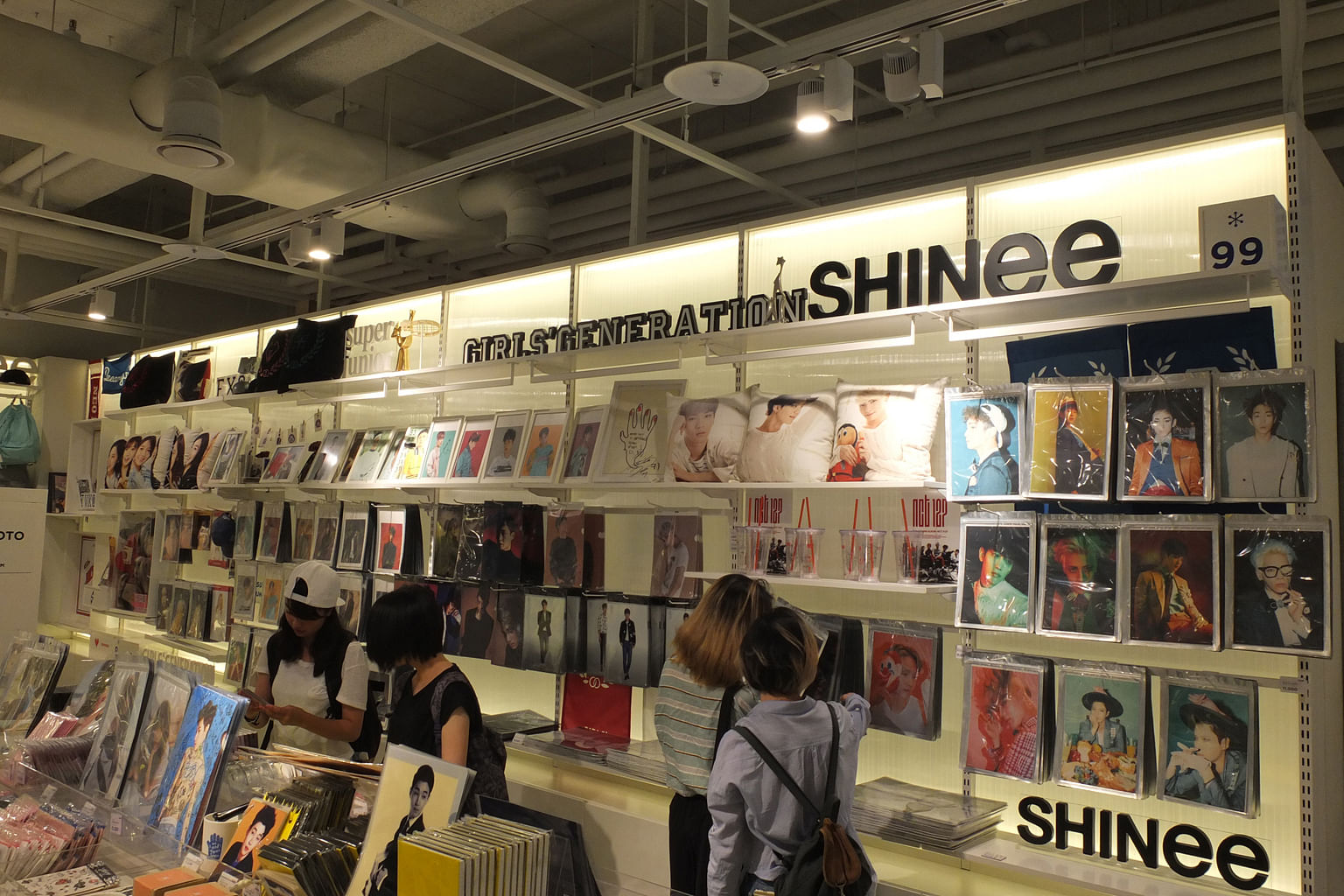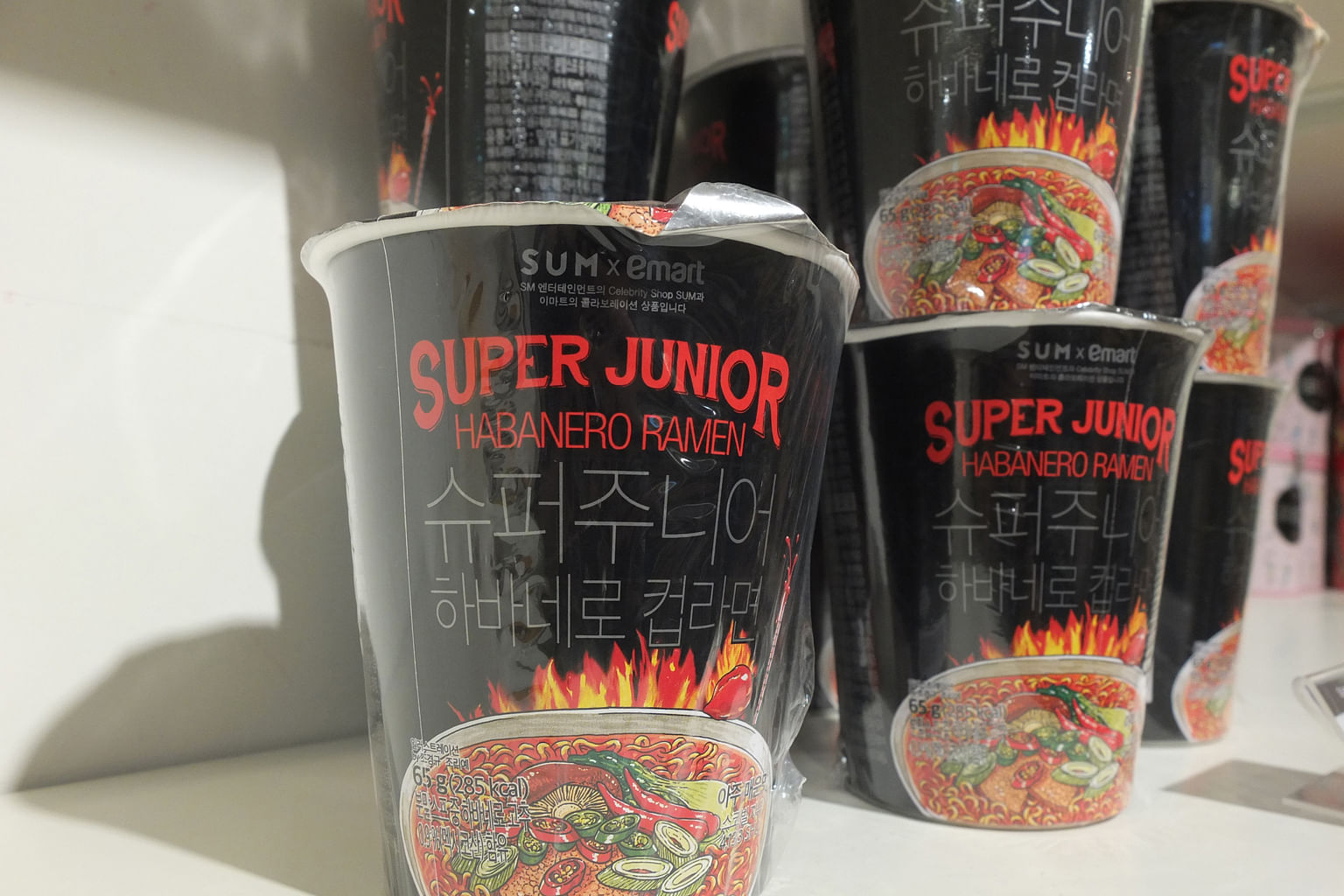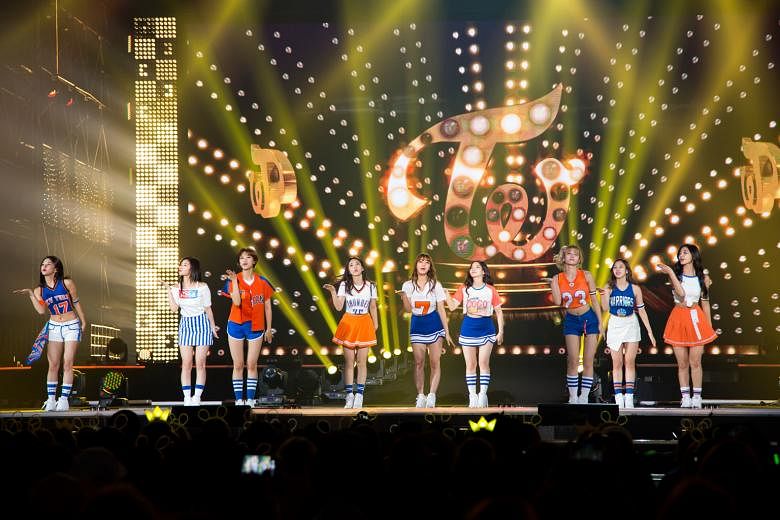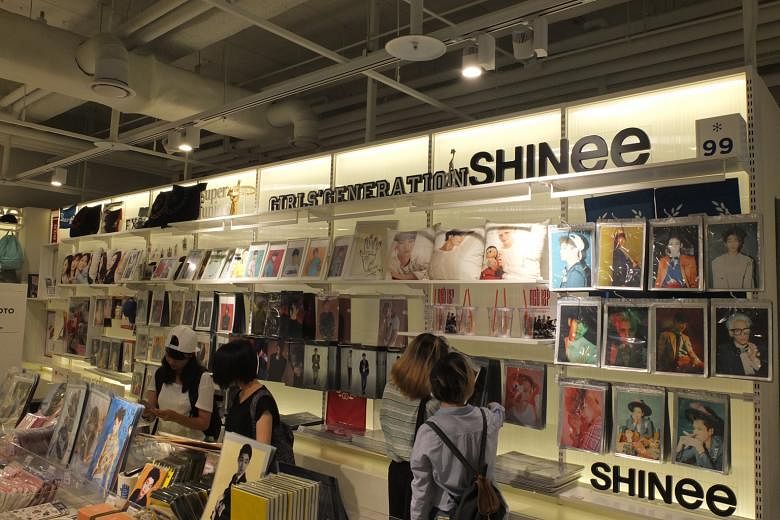Pop culture has worked a powerful magic in South Korea, turning it into one of the coolest places on the planet, which begs the question: How can Singapore get in on the act?
The Hallyu fever, which started around 20 years ago, had overtaken Japanese pop that held sway from the 1980s to the early 1990s, and shows no sign of cooling.
Hallyu, a term that broadly refers to the Korean wave, covers K-pop music and TV dramas and movies, and extends into fashion, food and beauty. Its success has had a substantial influence on South Korea, not just in cultural terms but also in adding some dazzle to an economy more associated with shipbuilding and electronics.
Observers say Singapore could grab a slice of this cultural cash cow, given its multi-ethnic and multicultural society and innate exposure to Western influences. But the country lacks its own entertainment culture.
"The immediate step is... to create national awareness of the Singapore pop culture content. Only when Singapore has established a firm national culture can we combine other foreign factors to create a culture content that's uniquely Singapore," says Mr Joongshik Wang, partner at Ernst & Young Corporate Finance.
-
SOUTH KOREA AT A GLANCE
-
CAPITAL CITY: Seoul
GDP GROWTH IN 2015: 2.6%
UNEMPLOYMENT RATE: 3.6%
MONTHLY AVERAGE HOUSEHOLD INCOME: 4.3 million won (S$5,295)
POPULATION: 51 million
CONTENT EXPORT AND TOURISM
Data from the Korea Creative Content Agency showed that the content industry's exports - including music, games, broadcasting and knowledge information - rose 10.5 per cent over 2014 to US$58.3 billion (S$79 billion ) last year, markedly up from the US$43 billion in 2011.
While there are no official statistics on K-wave's impact on the South Korean economy, CIMB Private Bank economist Song Seng Wun estimates that it probably contributes 3 to 5 per cent to the country's gross domestic product.
The South Korean economy grew at 2.6 per cent last year - down from 3.3 per cent in 2014 - largely due to slumping exports and manufacturing. Tourism-promotion officials said about 10 per cent of tourists who visited South Korea last year were there purely because of Hallyu.
Inbound tourist numbers fell 6.8 per cent last year from about 14.2 million in 2014 to 13.2 million, owing to the Middle East respiratory syndrome outbreak.
The numbers, however, are expected to pick up in the coming years as the Visit Korea Committee embarks on a campaign - 2016- 2018 Visit Korea Year - to promote the Winter Olympics in 2018 which will be held in Pyeongchang from Feb 9 to 25.
"We are using Hallyu as a leverage to induce more people to come to South Korea. It can help to support tourism," says Ms Han Kyung Ah, secretary-general of the committee.
Visitors from China almost touched six million last year, followed by 1.8 million from Japan. Only 160,153 visitors from Singapore went to South Korea last year, down from 201,105 in 2014.
"We are trying to diversify and capture more tourists from other continents, such as the Middle East and America," says the committee's marketing general manager, Ms Chung Juyoung.
The latest tourism campaign will feature 52 Hallyu cultural festivals and the Korea Grand Sale next month, similar to the Great Singapore Sale, among many things.
It is hoped that the series of events can boost tourist arrivals to 20 million a year.
PACKAGING HALLYU

Observers told The Straits Times that the sustained appeal of Hallyu was no fluke and its success had to do with state support and concerted industry effort to stay ahead of the curve.
"Since the popularity of K-Pop and Korean drama started to boom in the late 1990s, the South Korean government has been increasing its financial support towards the Korean culture business. This included launching a US$1 billion investment fund to support the pop industry in 2005," says Mr Wang.
Ernst & Young notes that the South Korean government has invested around US$5.2 billion or 1.4 per cent of its Budget in culture and media, with the goal of increasing it to US$7.8 billion, or 2 per cent of the Budget, by next year.
Initiatives included increasing the number of Korean Cultural Centres and Korean language centres around the world. The King Sejong Institute, for example, has 143 centres in 57 countries, and plans are afoot to set up one in Singapore by the end of the year, to encourage the learning of the Korean language.
CROSS-SELLING

Mr Song, who has been following K-wave trends for 15 years, says "effective cross-selling" was a key success factor. "They are good in tying everything together. There's the music and drama, but the pop stars, actors and actresses portray a certain style or look that in turn created demand for fashion and skincare products or cosmetic procedures," Mr Song adds.
Media firms including S.M.Entertainment, JYP Entertainment and CJ E&M Corporation have been credited for their ability to churn out stars, and create captivating content and well-produced music videos. A widely known example is pop star Psy's Gangnam Style, which spawned a distinctive dance that became a worldwide craze. The song has garnered over 2.6 billion YouTube views since it was posted in July 2012.
The industry would need fairly deep pockets to roll out new bands regularly, as the cost of training, marketing and music production could easily run into hundreds of thousands of US dollars per K-pop group. The production cost for a drama could come in at around US$400,000 per episode, says Seoul-based production company A Story, which produced one or two works a year, including the crime thriller Signal that did well in China recently.
"Since K-drama became popular outside South Korea..., we have become more cautious about not being negative, or making negative remarks, on Japan or China, especially if we have any sensitive political issues," says Mr Oh Seung Joon, a producer at A Story.
The glitz and glamour of the South Korean entertainment industry has had a hand in lifting the medical tourism sector as well - as thousands flocked to the country for a little nip or tuck to improve their looks.
Last year, South Korea welcomed about 340,000 medical tourists - though the breakdown on the exact number that had cosmetic procedures done was not provided.
The health and wellness segment is an area that the South Korean government wants to promote further, with a view to attracting one million medical tourists by 2020.
LURE OF K-WAVE
Riding on the K-wave, S.M. Entertainment last year opened SM TOWN at COEX Artium - a six-storey K-pop complex boasting a state-of-the-art theatre, recording studios, a large gift shop and a cafe with food named after popular bands like SHINee, Super Junior and EXO.
Singaporean Oon Yong Xin was at the gift shop when The Straits Times visited the place during a trip organised by the Korean Culture and Information Service for some Asean journalists.
"Since 2010, I have been visiting South Korea every year. I'm into K-pop, I took up the Korean language and I really like their culture, style and food," said Ms Oon, a 26-year-old pre-school teacher.
Corporations also sign up celebrities to attract customers. Seven Luck Casino, operated by the state-owned Grand Korea Leisure (GKL), appointed actor Lee Min Ho as the face of the casino this year and he has been featured in its domestic and international marketing campaigns.
Mr Peter Kim, director of GKL's public relations team, says: "Our main clients are from Japan and China, but we see some from Vietnam, Cambodia, Laos and Myanmar. They usually come here due to K-dramas or Hallyu."
FORECASTING GLOBAL TRENDS
Successful as Hallyu is, the South Koreans are still exploring new ideas to stay ahead. Cel Academy - a training centre for content creators - is adding new programmes on virtual reality and augmented reality next year to help students tap opportunities from "digital convergence".
The academy's culture creative director, Professor Koh Joo Won, says: "The convergence between advanced IT technology that South Korea has and traditional cultural content can become a new growth engine. We want people to create new things or a new market."
Mr Song notes that many K-pop groups feature members who could connect with their overseas fan base, citing girl band Twice - which has among its members two Japanese and a Taiwanese. "While K-pop started out more domestic-centric, many bands now have members of different nationalities, and this helps with marketing them abroad," Mr Song notes.
While it may not be possible to fully replicate what the South Koreans have done, the success of Hallyu as a tool for expanding South Korea's soft power and cultural engagement with the world makes for an interesting case study.




